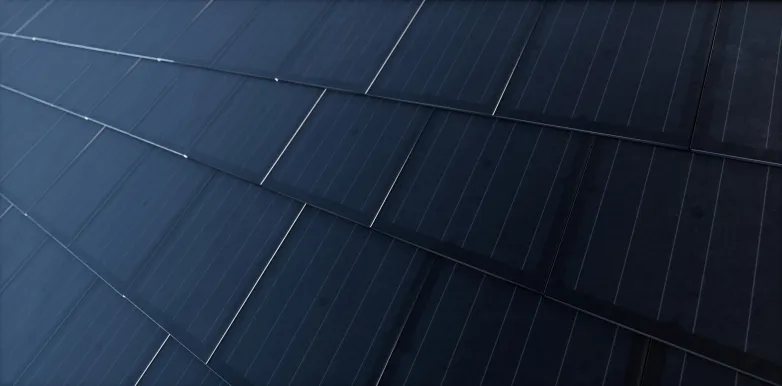Developments in the BIPV Sector
- The BIPV (Building Integrated PhotoVoltaic) has seen several advancements during the last couple of decades. The idea is to use PV modules in buildings in such a way that these modules become a part of the building’s facade, walls, roof or windows.

This post will briefly cover organizations and projects that are making the adoption of BIPV easier and cost effective.
This PV sector is sometimes divided into two categories:
BIPV for Residential Applications:
BIPV modules for the residential sector are also called ‘solar shingles’, ‘solar roof tiles’ or ‘solar roof’. Solar shingles replace the existing shingles installed on the roof of a house and become ‘part of the roof’. For flat roof houses without shingles, standard solar panels with mounting systems are installed.
Some of the recent developments in residential BIPV are as follows:
- TESLA Solar Roof: With a brand name like TESLA, these solar shingles are becoming quite popular. In a way, TESLA helped to commercialize and increase the adoption of residential BIPV. These solar shingles or tiles look better and are three times stronger than standard roof shingles, from a durability standpoint this is quite impressive. These tiles come with a 25 years warranty and ‘class-A’ fire-class rating. TESLA’a ability to provide complete PV solutions such as inverters, monitoring equipment and battery backup, makes it an ideal solution for the residential BIPV sector.
- HanTile and SolarTile from Hanergy: Hanergy has decades of experience in the manufacturing and value chain of thin-film solar PV modules. HanTile is designed for roofs with curved roof tiles, these are waterproof and allow ventilation. The most noticeable aspect of this tile is its curves, which are aesthetically pleasing. SolarTile is another product from Hanergy, unlike the HanTile, this tile is flat and is aimed to replace conventional flat and square roof tiles. SolarTile features tile to tile interlocking, which should reduce installation time. The conversion efficiency of SolarTile can reach upto 18.7%.
BIPV for Commercial Buildings Application:
For most industrial units such as factories and warehouses, conventional solar PV modules offer the best payback period and LCOE. These buildings usually have ample flat or tilted rooftop space available.
Commercial buildings and high rises have considerable ‘vertical land’. Instead of conventional glass curtains and windows, integrating photovoltaic panels with commercial buildings can have several benefits including the ability to generate electricity.
These are some recent note-worthy developments:
- Hanergy’s eco-building BIPV project in China: About two years ago Hanergy completed a 460kW project, where over 4000 units of 100W thin-film solar PV modules were installed on a building facade. The PV modules supply electricity directly to the building, decreasing the electric consumption from the grid. Hanergy also produces solar panels or solar windows in different colors, textures, and different levels of translucency.
- Onyx Solar: This company produces amorphous and crystalline silicon PV glass or panes for a wide range of applications. Their specialized large size PV panes can measure 13.5’x6.5’. Onyx Solar has completed several innovative BIPV projects around the world. Besides generating electricity, their PV glass allows natural light to pass through, can have IR and UV filters, offer thermal and acoustic isolation, and can be designed for different architectural applications.
BIPV still accounts for a very small share of the total global PV market, this is due to comparatively higher cost, need for tailored and often complex solutions. Innovated products, local regulations and requirements for greener buildings are helping the BIPV sector grow.
Also read
